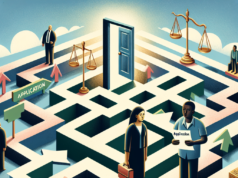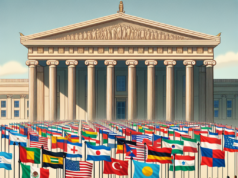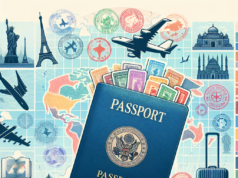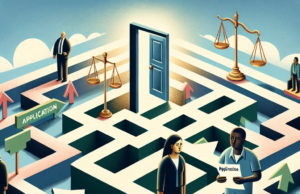
The ongoing debates surrounding immigration reform in the United States have reached a critical juncture, as the nation grapples with a complex crisis at its borders. With record numbers of migrants seeking entry, the political landscape has become increasingly polarized, complicating efforts to find a comprehensive solution. This article aims to unravel the intricacies of the immigration crisis, exploring its historical context, the key stakeholders involved, the human stories that underscore the issue, and the various policy proposals on the table. Ultimately, we will examine the potential implications of immigration reform for American society and the economy.
Understanding the Current State of Immigration at America’s Borders: An Overview
The current state of immigration at America’s borders is characterized by unprecedented levels of migration, driven by a combination of factors including economic instability, violence, and climate change in home countries. In recent years, the U.S. has witnessed surges in the number of asylum seekers and undocumented immigrants, leading to overcrowded facilities and strained resources. The Biden administration has faced significant challenges in managing this influx, with critics arguing that policies have either been too lenient or too harsh. The situation has prompted urgent calls for reform, as the existing immigration system struggles to accommodate the realities of modern migration patterns.
Historical Context: The Evolution of Immigration Policies in the United States
To understand the current immigration crisis, it is essential to consider the historical evolution of U.S. immigration policies. From the Chinese Exclusion Act of 1882 to the Immigration and Nationality Act of 1965, U.S. immigration laws have undergone significant changes, often reflecting the socio-political climate of the times. The late 20th century saw a shift towards more restrictive measures, culminating in the Illegal Immigration Reform and Immigrant Responsibility Act of 1996. In recent years, the focus has shifted towards border security and enforcement, often at the expense of pathways to legal immigration. This historical backdrop provides crucial context for the current debates surrounding immigration reform.
Key Stakeholders in the Immigration Reform Debate: Who’s Involved and Why
The immigration reform debate involves a diverse array of stakeholders, each with their own interests and motivations. On one side, advocacy groups and humanitarian organizations argue for more compassionate policies that prioritize human rights and provide pathways to citizenship for undocumented immigrants. On the other side, some lawmakers and constituents advocate for stricter border controls and enforcement measures, citing concerns over national security and economic impact. Additionally, business leaders often weigh in, emphasizing the need for a stable workforce and the economic contributions of immigrants. This multifaceted landscape complicates the search for consensus on immigration reform.
The Human Impact: Personal Stories Behind the Immigration Crisis
Behind the statistics and political rhetoric lie the personal stories of individuals and families affected by the immigration crisis. Many migrants undertake perilous journeys, fleeing violence, persecution, and poverty in their home countries. Their experiences often include harrowing tales of loss, resilience, and hope. For instance, families separated at the border face emotional turmoil, while children endure trauma that can have lasting effects on their mental health. These personal narratives highlight the human cost of immigration policies and underscore the urgent need for reform that addresses not only legal frameworks but also the humanitarian aspects of migration.
Policy Proposals: Analyzing Solutions from Both Sides of the Political Spectrum
As the immigration reform debate intensifies, various policy proposals have emerged from both sides of the political spectrum. Democrats generally advocate for comprehensive immigration reform that includes pathways to citizenship for undocumented immigrants, increased support for asylum seekers, and a focus on humanitarian aid. Conversely, Republicans often emphasize border security, proposing measures such as increased funding for border enforcement and stricter penalties for illegal immigration. Some bipartisan efforts have also surfaced, aiming to balance security concerns with humanitarian needs. However, the stark ideological divide continues to hinder progress, leaving many proposals stalled in Congress.
Future Implications: What Immigration Reform Means for America’s Society and Economy
The implications of immigration reform extend far beyond the political arena, affecting the very fabric of American society and its economy. A well-structured immigration system could enhance economic growth by filling labor shortages, fostering innovation, and contributing to cultural diversity. Conversely, failure to address the crisis could exacerbate social tensions, strain public resources, and hinder economic recovery. As the U.S. stands at a crossroads, the decisions made regarding immigration reform will shape the nation’s identity and its role in the global community for generations to come.
In conclusion, the immigration reform debate in the United States is a multifaceted issue that requires careful consideration of historical context, stakeholder interests, and the human impact of policies. As the nation grapples with the complexities of migration, it is imperative that lawmakers seek solutions that balance security with compassion. The future of immigration reform will not only determine the fate of millions of individuals but will also have lasting implications for American society and its economy. As discussions continue, the hope remains that a comprehensive and humane approach can be achieved, paving the way for a more just and equitable immigration system.



























